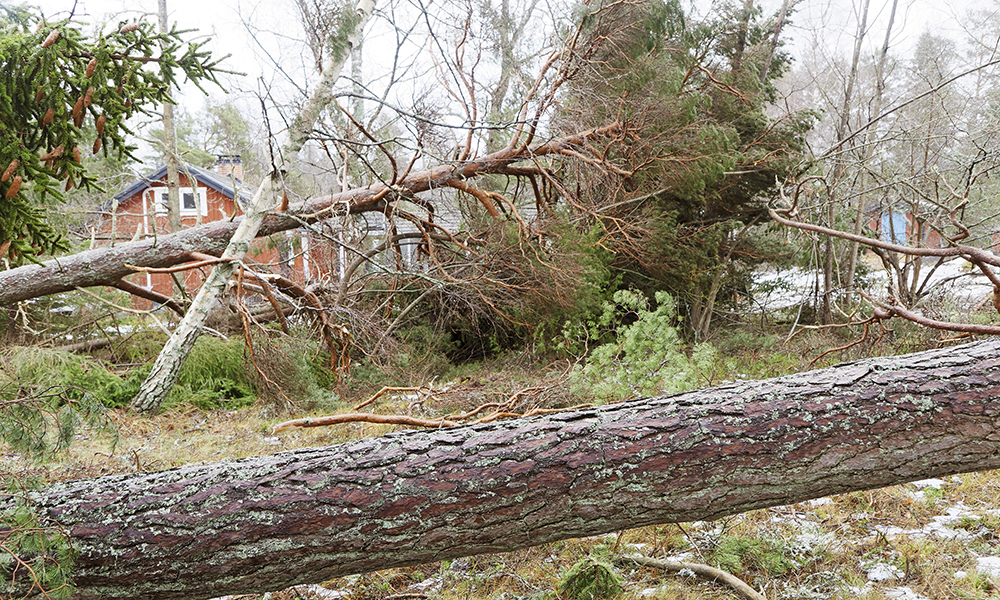Weather phenomena and main grid faults cost the national economy approximately 4–8 million euros every year. New measurement equipment will improve Fingrid’s main grid reliability and speed up the repair of faults.
Fingrid’s Control Room Manager Arto Pahkin estimates that the investment of some 3 million euros in 67 power quality measurement devices and 94 travelling wave fault locators will pay for itself in about 10 years.
“The new measurement devices significantly speed up our ability to locate main grid faults. We can more effectively divide the grid into sections and then restore electricity to the functional areas in a flexible manner,” says Pahkin.
Travelling wave location makes it possible to find faults with accuracy of 200 meters, whereas until now patrols have had to survey areas of up to 10 kilometers in size.
“Travelling wave location reduces the cost of fault patrols and allows us to begin the repair work faster. Electrical safety is also better because we can find the fault sooner and restore the environment to a safe condition more quickly,” explains Pahkin.
Customers gain accurate information about power quality
Fingrid will be installing 67 power quality measurement devices supplied by new Unipower AB during this and next year. This will give customers better service by providing them with accurate information about power quality.
“The measurement devices will be installed close to the customers’ connection points. In the case of a sudden and unexpected deviation in power quality, we can be certain that the data will be recorded. In addition to the devices, the renewal includes a monitoring system application with various tools to monitor and report on power quality,” says Planner Onni Härmä, who is responsible for power quality measurement and system procurement at Fingrid.
Power quality can be evaluated on the basis of values such as voltage harmonics, voltage asymmetry and variations in voltage level. The devices also collect event recordings and statistics about voltage dips, outages and transients at the metering point.
Devices installed at the substations measure phase voltage and currents from the instrument transformer and process the measurement data, which is then transferred to Fingrid’s database. A variety of applications can be used to analyse and visualise the data.
“We’re developing the Oma Fingrid customer reporting service so that it’s easier for customers to independently monitor the data from their own connection points,” says Härmä.
He sees flexibility as a further benefit of the new measurement system.
In the future, it will be possible to integrate other measurement devices with the system.
75 new travelling wave fault locators
In 2016, Fingrid started a travelling wave fault location project with the aim of improving fault location on 110 and 220 kilovolt transmission lines and proactively identifying future faults in the grid.
The pilot project was carried out on Fingrid’s 220/110 kV grid in northern Finland. During the pilot, 19 travelling wave fault locators supplied by Qualitrol were installed at 18 Fingrid substations. The planning and installation work was performed by Siemens. Based on good experiences collected over a period of 10 months, travelling wave location will be implemented throughout the Fingrid network in the future.
“Fault location to an accuracy of 200 meters is equivalent to that of a single tower, which is an outstanding level”, says Protection and Fault Location Specialist Antti Vainionpää from the grid systems department of Fingrid’s asset management unit.
A total of 75 new travelling wave fault locators will be installed at Fingrid’s 59 substations this year. The project also includes Fingrid’s cross-border transmission lines to Norway and Sweden, as well as several pilots for fault location in 110 kV customer transmission lines.
Fault location based on travelling waves means that travelling wave fault locator sensors at the ends of both substations measure the high-frequency current or voltage transients in conductors and react to deviations that exceed the permitted limit value for the current or voltage. The fault site is identified using a program application that calculates the length of the transmission line at the fault location according to the time stamp obtained from the travelling wave fault locator and the speed of the wave.
According to Vainionpää, the greatest benefits of this system are related to faster identification of fault location and fault site predictability.
The new travelling wave fault location method can be used to monitor current and voltage transients produced in the grid and, for example, anticipate disturbances or faults caused by frost, which are not as immediate as those caused by lightning.
Other faults that can be identified in advance include ageing of tower insulators or faults related to bird areas. Travelling wave measurement makes it possible to react to these situations before they cause a real problem in the electricity grid.






